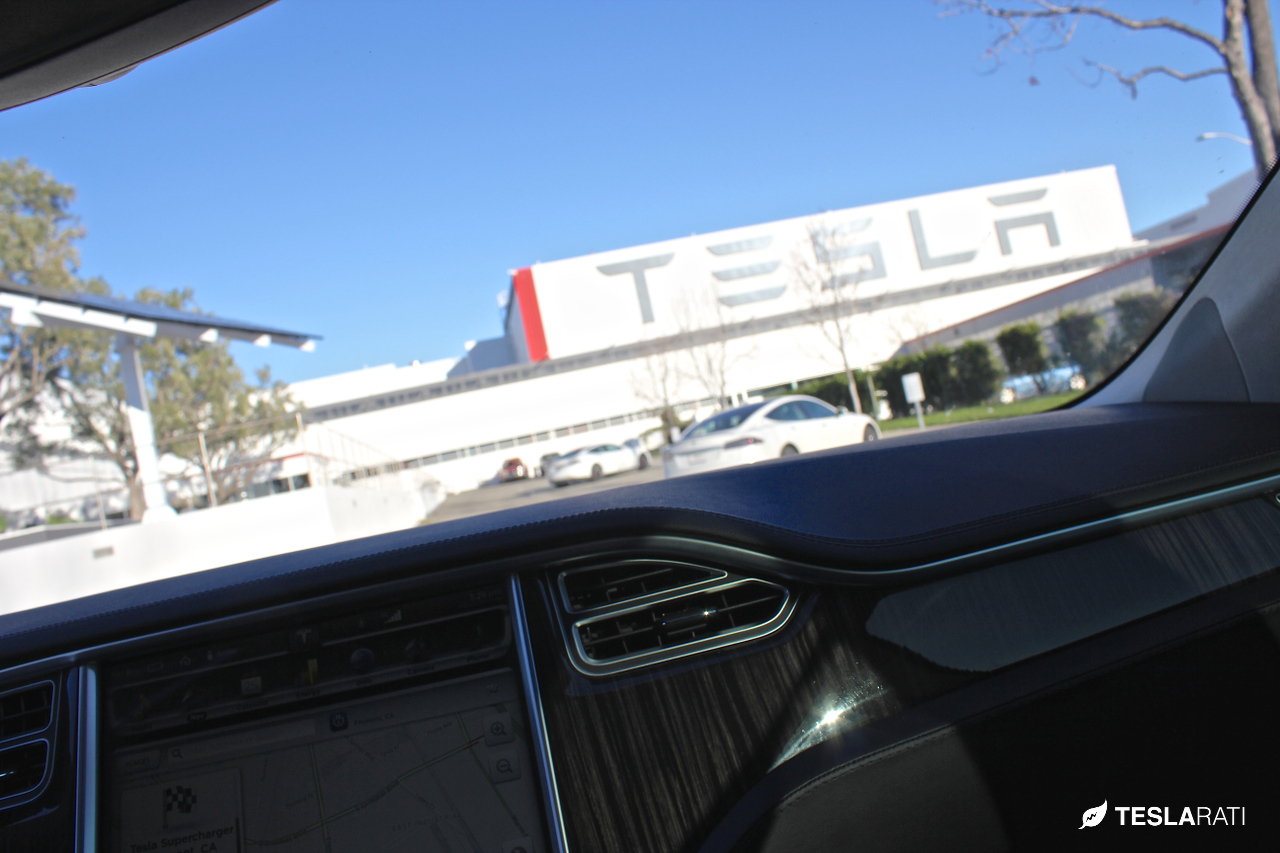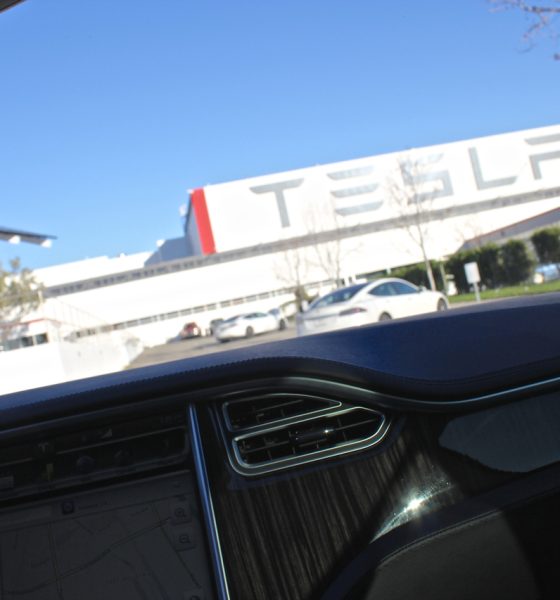It’s the question that puzzles pundits and makes short-sellers see red: Why isn’t Tesla broke yet? The company has posted losses almost every quarter since its founding, but not only does it remain in business, it steadily rolls out new products and opens up new markets, as Tesla fanboys cheer and the stock (over the long term) has soared.
Many have sought an answer to this consequential question – the latest is the Youtube channel The Rest of Us, in a charmingly childlike animated video that explains Tesla’s unique financial model in the simplest of terms.
Above: Exploring the financials at Tesla (Youtube: The Rest of Us)
In short, Tesla isn’t broke because it isn’t running out of cash. Theoretically, losses can continue indefinitely, as long as the kitty is regularly replenished. But where does the cash come from? Some comes from the sale of vehicles – Tesla earns a healthy margin on each car it sells (despite the disingenuous claims of some naysayers), and it sometimes even gets cash in the form of deposits before it even builds a vehicle (a clever financial feat that’s the envy of other automakers).
However, even as Tesla rakes in piles of money from product sales, it shovels out much more. Whence cometh the cash to top up Tesla’s reserves? Some is borrowed (debt financing), but more comes from the stock market (equity financing). Why do investors keep buying shares in a company that perennially loses money? Because savvy investors don’t base their decisions on what a company is doing today, but on its prospects for the future. Tesla is focused on the future like no other automaker, and has steadily invested huge sums to prepare for a future in which it sees huge opportunities.
Many articles about Tesla and other high-flying tech companies use terms such as “burn rate,” which can give the false impression that the cash that’s coming in just disappears, frittered away, heedlessly tossed to the winds, flushed down the…you get the idea.
Back in 2016, Vincent Paver, writing in Medium, made some good points as he explained that, far from throwing its cash in the fireplace, Tesla has invested much of it in capital goods – handy things like factories, machine tools, robots and charging facilities. Paver points out that, at the time of writing, Tesla had “burned” $1.6 billion over the last 12 months, but the book value of its equipment had increased by $2.8 billion over the same period. Other expenditures, such as vehicle development costs and employee training, may not result in tangible bricks-and-mortar assets, but they are also investments, as they allow Tesla to create new products that it can sell for more lovely cash.
Paver concludes that what we have here is not a company that is recklessly flinging away money, but one that is “in a capital-intensive business, and is [investing] substantial but appropriate sums of money on equipment and capacity expansion, tied directly to strong end user demand.”
And there you have the real key to why the callow California carmaker hasn’t gone belly-up, and won’t if current trends continue. The demand for Tesla’s products is strong – the backlog of Model 3 orders remains huge, and Models S and X continue to sell at a steady pace. Yes, not being able to produce vehicles fast enough to meet demand is a problem, but the reverse would be much worse. If Tesla’s waiting list disappears, and sales figures start going down, then it will truly be time to worry about the company’s cash flow.
Paver calls Tesla “a rare example of a public company aggressively chasing a market opportunity many multiples greater than its current scale.” Elon Musk’s new compensation plan, which was recently approved by shareholders, envisions the automaker growing to a market cap of $650 billion, which would make Tesla one of the five largest companies in the US. If and when that happens, rest assured that plenty more cash will be burned along the way.
===
Note: Article originally published on evannex.com by Charles Morris

Investor's Corner
Tesla stock closes at all-time high on heels of Robotaxi progress

Tesla stock (NASDAQ: TSLA) closed at an all-time high on Tuesday, jumping over 3 percent during the day and finishing at $489.88.
The price beats the previous record close, which was $479.86.
Shares have had a crazy year, dipping more than 40 percent from the start of the year. The stock then started to recover once again around late April, when its price started to climb back up from the low $200 level.
This week, Tesla started to climb toward its highest levels ever, as it was revealed on Sunday that the company was testing driverless Robotaxis in Austin. The spike in value pushed the company’s valuation to $1.63 trillion.
Tesla Robotaxi goes driverless as Musk confirms Safety Monitor removal testing
It is the seventh-most valuable company on the market currently, trailing Nvidia, Apple, Alphabet (Google), Microsoft, Amazon, and Meta.
Shares closed up $14.57 today, up over 3 percent.
The stock has gone through a lot this year, as previously mentioned. Shares tumbled in Q1 due to CEO Elon Musk’s involvement with the Department of Government Efficiency (DOGE), which pulled his attention away from his companies and left a major overhang on their valuations.
However, things started to rebound halfway through the year, and as the government started to phase out the $7,500 tax credit, demand spiked as consumers tried to take advantage of it.
Q3 deliveries were the highest in company history, and Tesla responded to the loss of the tax credit with the launch of the Model 3 and Model Y Standard.
Additionally, analysts have announced high expectations this week for the company on Wall Street as Robotaxi continues to be the focus. With autonomy within Tesla’s sights, things are moving in the direction of Robotaxi being a major catalyst for growth on the Street in the coming year.
Elon Musk
Tesla needs to come through on this one Robotaxi metric, analyst says
“We think the key focus from here will be how fast Tesla can scale driverless operations (including if Tesla’s approach to software/hardware allows it to scale significantly faster than competitors, as the company has argued), and on profitability.”

Tesla needs to come through on this one Robotaxi metric, Mark Delaney of Goldman Sachs says.
Tesla is in the process of rolling out its Robotaxi platform to areas outside of Austin and the California Bay Area. It has plans to launch in five additional cities, including Houston, Dallas, Miami, Las Vegas, and Phoenix.
However, the company’s expansion is not what the focus needs to be, according to Delaney. It’s the speed of deployment.
The analyst said:
“We think the key focus from here will be how fast Tesla can scale driverless operations (including if Tesla’s approach to software/hardware allows it to scale significantly faster than competitors, as the company has argued), and on profitability.”
Profitability will come as the Robotaxi fleet expands. Making that money will be dependent on when Tesla can initiate rides in more areas, giving more customers access to the program.
There are some additional things that the company needs to make happen ahead of the major Robotaxi expansion, one of those things is launching driverless rides in Austin, the first city in which it launched the program.
This week, Tesla started testing driverless Robotaxi rides in Austin, as two different Model Y units were spotted with no occupants, a huge step in the company’s plans for the ride-sharing platform.
Tesla Robotaxi goes driverless as Musk confirms Safety Monitor removal testing
CEO Elon Musk has been hoping to remove Safety Monitors from Robotaxis in Austin for several months, first mentioning the plan to have them out by the end of 2025 in September. He confirmed on Sunday that Tesla had officially removed vehicle occupants and started testing truly unsupervised rides.
Although Safety Monitors in Austin have been sitting in the passenger’s seat, they have still had the ability to override things in case of an emergency. After all, the ultimate goal was safety and avoiding any accidents or injuries.
Goldman Sachs reiterated its ‘Neutral’ rating and its $400 price target. Delaney said, “Tesla is making progress with its autonomous technology,” and recent developments make it evident that this is true.
Investor's Corner
Tesla gets bold Robotaxi prediction from Wall Street firm
Last week, Andrew Percoco took over Tesla analysis for Morgan Stanley from Adam Jonas, who covered the stock for years. Percoco seems to be less optimistic and bullish on Tesla shares, while still being fair and balanced in his analysis.

Tesla (NASDAQ: TSLA) received a bold Robotaxi prediction from Morgan Stanley, which anticipates a dramatic increase in the size of the company’s autonomous ride-hailing suite in the coming years.
Last week, Andrew Percoco took over Tesla analysis for Morgan Stanley from Adam Jonas, who covered the stock for years. Percoco seems to be less optimistic and bullish on Tesla shares, while still being fair and balanced in his analysis.
Percoco dug into the Robotaxi fleet and its expansion in the coming years in his latest note, released on Tuesday. The firm expects Tesla to increase the Robotaxi fleet size to 1,000 vehicles in 2026. However, that’s small-scale compared to what they expect from Tesla in a decade.
Tesla expands Robotaxi app access once again, this time on a global scale
By 2035, Morgan Stanley believes there will be one million Robotaxis on the road across multiple cities, a major jump and a considerable fleet size. We assume this means the fleet of vehicles Tesla will operate internally, and not including passenger-owned vehicles that could be added through software updates.
He also listed three specific catalysts that investors should pay attention to, as these will represent the company being on track to achieve its Robotaxi dreams:
- Opening Robotaxi to the public without a Safety Monitor. Timing is unclear, but it appears that Tesla is getting closer by the day.
- Improvement in safety metrics without the Safety Monitor. Tesla’s ability to improve its safety metrics as it scales miles driven without the Safety Monitor is imperative as it looks to scale in new states and cities in 2026.
- Cybercab start of production, targeted for April 2026. Tesla’s Cybercab is a purpose-built vehicle (no steering wheel or pedals, only two seats) that is expected to be produced through its state-of-the-art unboxed manufacturing process, offering further cost reductions and thus accelerating adoption over time.
Robotaxi stands to be one of Tesla’s most significant revenue contributors, especially as the company plans to continue expanding its ride-hailing service across the world in the coming years.
Its current deployment strategy is controlled and conservative to avoid any drastic and potentially program-ruining incidents.
So far, the program, which is active in Austin and the California Bay Area, has been widely successful.










